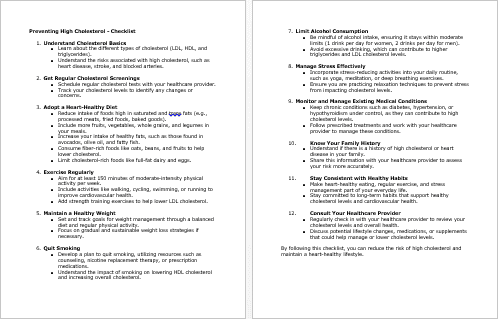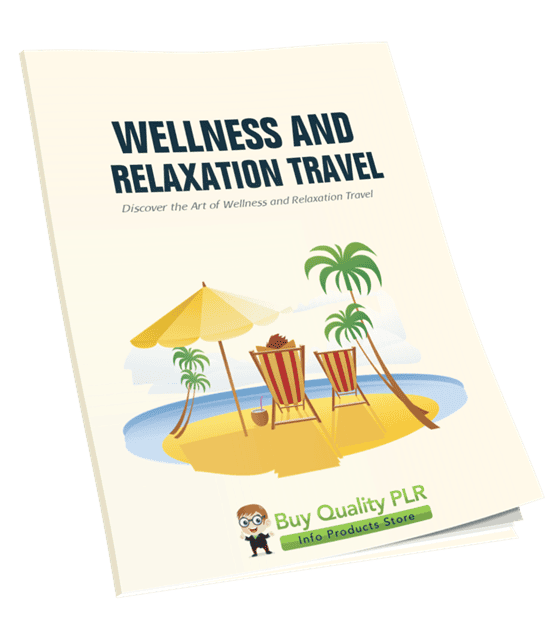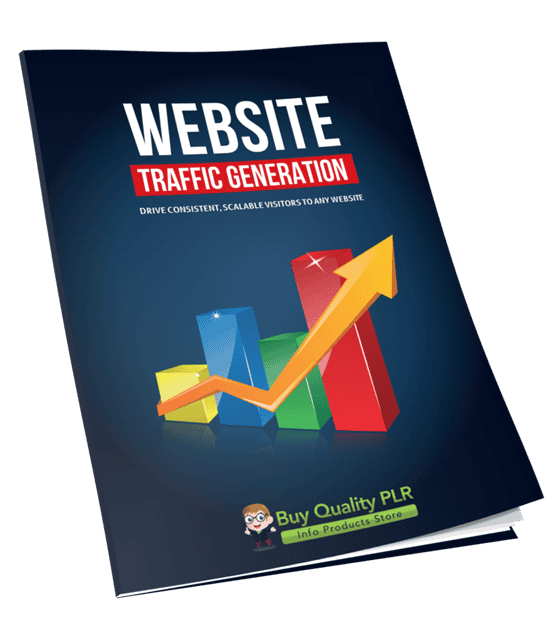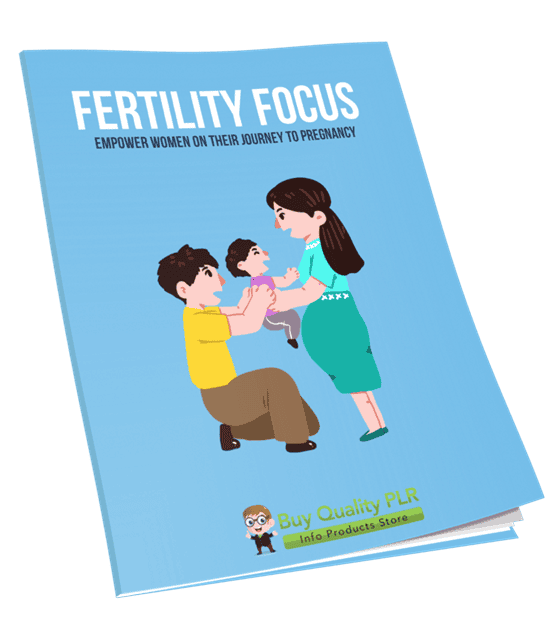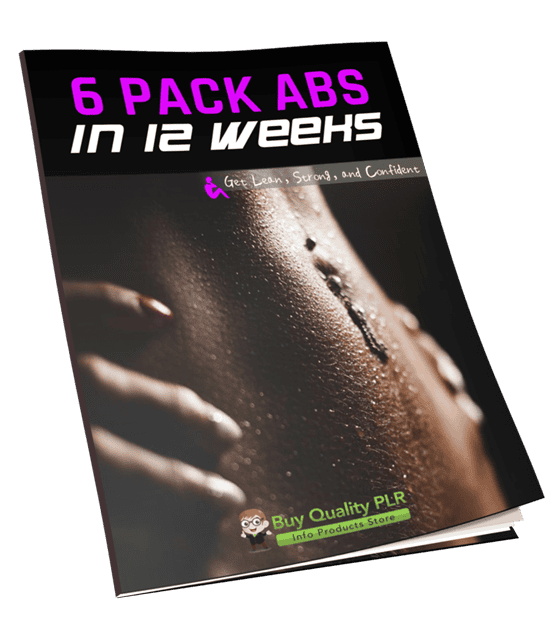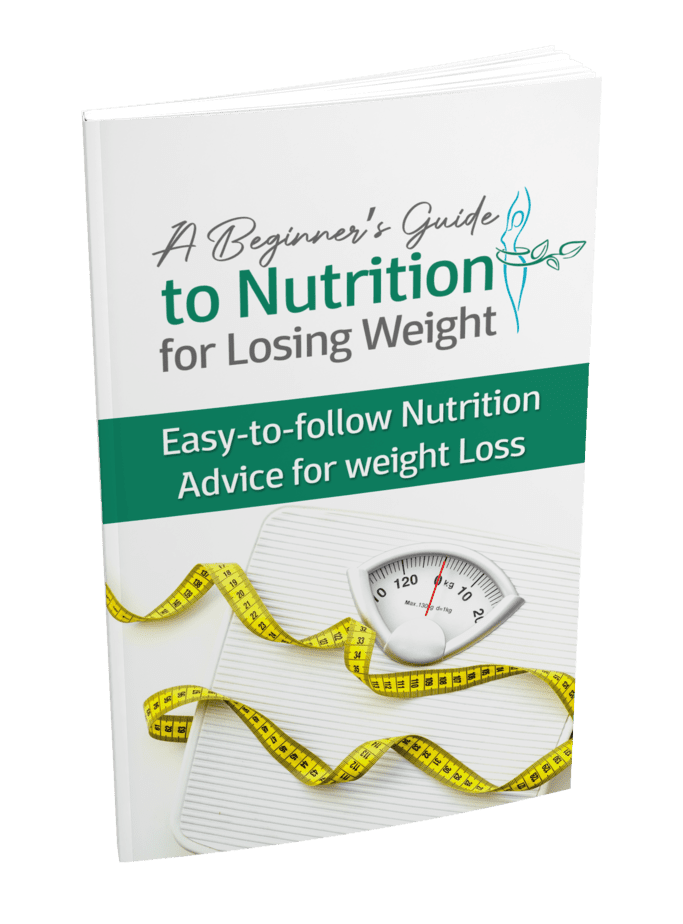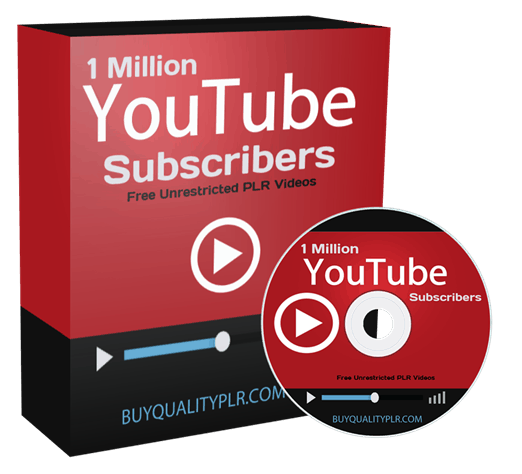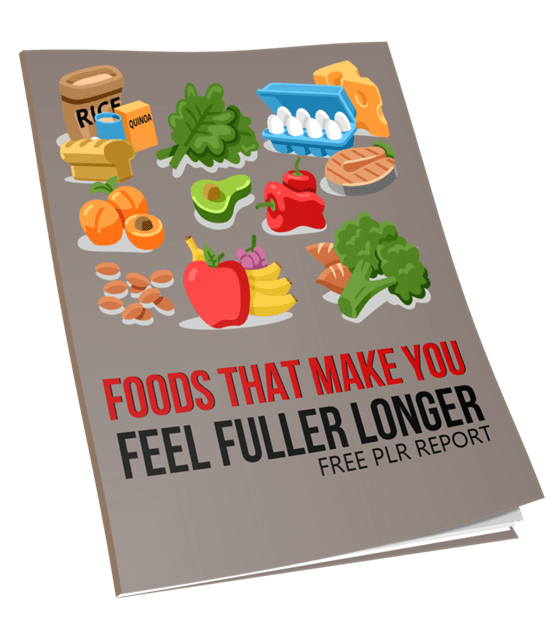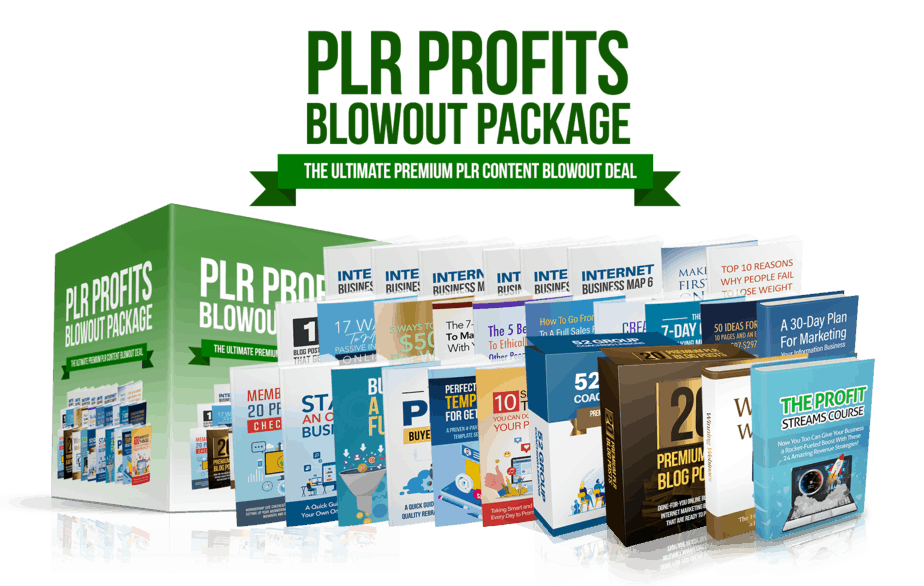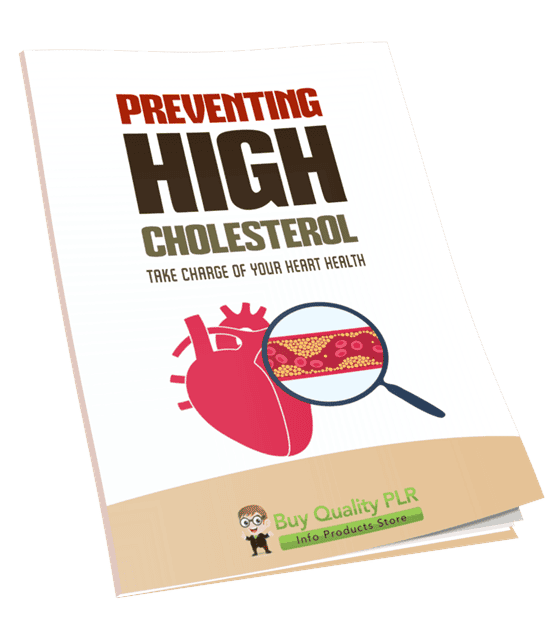
Preventing High Cholesterol PLR Course 26k Words
in Health PLR , Health PLR eBooks , Heart Health PLR , PLR Checklists , PLR eBooks , PLR eCourses , PLR List Building Reports , Premium PLR , Premium PLR eBooks , Premium PLR Reports , Premium White Label Brandable PLR Coaching Courses , Private Label Rights ProductsChoose Your Desired Option(s)
has been added to your cart!
have been added to your cart!
#hearthealth #cholesterolprevention #wellnessplr #healthplr #plrcourse #healthyliving #nutritiontips #plrcontent
Preventing High Cholesterol PLR Course – Take Charge of Your Heart Health
Empower Yourself and Your Audience to Prevent High Cholesterol
High cholesterol is a silent health risk that can lead to serious conditions like heart disease, stroke, and other cardiovascular complications. Millions struggle to maintain healthy cholesterol levels due to diet, lifestyle, genetics, and stress, yet prevention is entirely possible.
The Preventing High Cholesterol PLR Course is a comprehensive, step-by-step program designed to educate, empower, and guide individuals in lowering and maintaining healthy cholesterol levels. With 24,110 words of expertly structured content, this course gives you everything you need to create a complete digital product, workshop, or coaching program.
Whether you’re a health coach, nutritionist, wellness blogger, or entrepreneur, this PLR package provides ready-to-use, editable content that can be monetized across multiple platforms.
Presenting…
Preventing High Cholesterol PLR Course 26k Words
Why This Course Is Important
Cholesterol is a naturally occurring substance in your body, but too much LDL (bad cholesterol) and insufficient HDL (good cholesterol) can cause arterial plaque buildup, leading to restricted blood flow and cardiovascular disease.
This course will teach learners:
- What cholesterol is and why it matters
- The difference between LDL (bad) and HDL (good) cholesterol
- How lifestyle, diet, and genetics affect cholesterol levels
- Safe and practical strategies to prevent high cholesterol
- Techniques to sustain long-term heart health
By combining nutrition, exercise, and lifestyle strategies, this course provides a holistic approach to maintaining healthy cholesterol levels.
Course Structure: Five Comprehensive Modules
The course is structured into five detailed modules, each with four practical steps, giving learners a step-by-step roadmap to understand, prevent, and manage cholesterol effectively.
Module 1: Understanding Cholesterol
Step 1: What is Cholesterol?
Learn the basics of cholesterol, including how your body produces it and why it’s essential for functions like hormone production and cell repair.
Step 2: Types of Cholesterol
Understand LDL (bad cholesterol) versus HDL (good cholesterol) and their roles in cardiovascular health.
Step 3: The Dangers of High Cholesterol
Explore the risks associated with elevated cholesterol, including heart disease, stroke, and peripheral artery disease.
Step 4: How Cholesterol Affects Your Body
Discover how excess cholesterol can build plaque in arteries, leading to narrowed or blocked blood vessels.
Benefits: Learners gain a solid understanding of cholesterol, why it matters, and the impact on long-term health.
Module 2: Identifying Risk Factors
Step 1: Family History and Genetics
Learn how hereditary factors influence cholesterol levels and heart health.
Step 2: Lifestyle Choices
Understand the role of diet, physical activity, smoking, and alcohol in raising or lowering cholesterol levels.
Step 3: Medical Conditions That Affect Cholesterol
Discover how diabetes, high blood pressure, and obesity contribute to higher cholesterol.
Step 4: Age and Gender
Learn why men and women may experience different cholesterol risks as they age.
Benefits: Learners can identify their personal risk factors and take proactive steps to minimize them.
Module 3: Adopting a Heart-Healthy Diet
Step 1: Reduce Saturated and Trans Fats
Learn to cut back on foods high in unhealthy fats, such as fried foods, fatty meats, and processed snacks.
Step 2: Embrace Healthy Fats
Incorporate heart-friendly fats like olive oil, avocado, nuts, and seeds that support cholesterol balance.
Step 3: Incorporate Fiber-Rich Foods
Fiber-rich foods, including fruits, vegetables, and whole grains, help lower LDL cholesterol naturally.
Step 4: The Power of Omega-3 Fatty Acids
Explore foods rich in omega-3s—fatty fish, flaxseeds, and walnuts—to improve cholesterol profile and support heart health.
Benefits: Learners gain actionable knowledge to make dietary changes that directly improve heart health.
Module 4: Exercising to Lower Cholesterol
Step 1: Importance of Physical Activity
Understand how exercise raises HDL cholesterol (good cholesterol) and lowers LDL (bad cholesterol).
Step 2: Cardiovascular Exercise
Learn the benefits of walking, running, cycling, and swimming for heart health and cholesterol management.
Step 3: Strength Training and Cholesterol
Incorporate resistance training to improve metabolism, support weight management, and optimize cholesterol levels.
Step 4: Creating an Exercise Plan
Receive practical tips for establishing a consistent, sustainable fitness routine suitable for all fitness levels.
Benefits: Learners can build a fitness routine that actively supports healthy cholesterol levels.
Module 5: Maintaining Healthy Cholesterol
Step 1: Regular Cholesterol Testing
Learn the importance of tracking cholesterol with routine testing to monitor progress and adjust lifestyle choices.
Step 2: Managing Stress
Explore the connection between chronic stress and elevated cholesterol, and learn stress-reducing strategies.
Step 3: Avoid Smoking
Understand how smoking lowers HDL levels and increases cardiovascular risk—and why quitting is essential.
Step 4: Healthy Habits for Life
Develop long-term habits—balanced diet, consistent exercise, stress management—that maintain heart health and prevent high cholesterol.
Benefits: Learners gain lifelong strategies for maintaining optimal cholesterol levels and overall cardiovascular wellness.
Bonus Materials
- Preventing High Cholesterol Checklist (483 words): A concise action plan for daily heart-healthy practices
- FAQs (1,175 words): Answers to common questions about cholesterol, diet, exercise, and prevention
- Ready-to-Use Sales Page (760 words): Prewritten copy to market and sell the course
Who Can Benefit
- Health Coaches & Nutritionists: Offer a ready-made course for clients or create workshops.
- Wellness Bloggers & Content Creators: Repurpose into eBooks, guides, or membership content.
- Fitness Professionals: Add heart health education to training programs.
- Individuals Seeking Lifestyle Changes: Gain tools to prevent high cholesterol naturally.
How to Use and Profit from This PLR Course
- Sell the full course as a digital product or eBook.
- Split into modules or guides for micro-sales ($10–$20 each).
- Bundle with other PLR courses for premium packages ($47–$97).
- Launch a membership site and generate recurring revenue.
- Convert content into audio, video, or interactive lessons.
- Use excerpts as lead magnets to grow an email list.
- Conduct workshops or webinars based on the course content.
Licensing & Usage Rights
Permissions:
- Sell, teach, or repurpose the content as-is or with modifications.
- Modify 75% of the content to claim copyright.
- Use in eBooks, courses, newsletters, or coaching programs.
Restrictions:
- Cannot transfer PLR rights to customers.
- Maximum affiliate payout: 75%.
- Cannot give away full content for free.
- Cannot bundle without additional purchase.
Why Choose Preventing High Cholesterol PLR Course
- 24,110 words of structured, ready-to-use content
- Five modules with actionable steps
- Checklist, FAQs, and pre-written sales page included
- Practical strategies for diet, exercise, and lifestyle habits
- Perfect for creating digital products, coaching programs, or online courses
- Editable PLR format allows you to brand and monetize quickly
Invest in the Preventing High Cholesterol PLR Course today and give your audience the knowledge, tools, and strategies they need to maintain heart-healthy lifestyles. With ready-to-use content, practical steps, and bonus materials, this course is an invaluable resource for both learners and entrepreneurs.
has been added to your cart!
have been added to your cart!
Here A Sample of Preventing High Cholesterol PLR Course
Module 1: Understanding Cholesterol
Step 1: What is Cholesterol?
Introduction
Cholesterol is a term that often carries a negative connotation, but did you know that cholesterol is essential for your body to function properly? While high cholesterol levels can increase the risk of heart disease, cholesterol itself is not inherently bad. In this step, we will explore what cholesterol is, how it is produced in the body, and why it plays a vital role in overall health.
By understanding the basics, you will gain a clearer perspective on why balance is key when it comes to managing cholesterol levels.
1. Understanding Cholesterol: The Basics
Cholesterol is a waxy, fat-like substance that is found in every cell of the body. It is a type of lipid (fat) that travels through your bloodstream. While the word “fat” often suggests something unhealthy, cholesterol is actually an important component of cell membranes and is crucial for many biological functions.
There are two main sources of cholesterol:
- Endogenous Cholesterol (Produced by the Body): The liver produces about 75-80% of the cholesterol needed by the body. It regulates cholesterol production based on dietary intake and bodily needs.
- Exogenous Cholesterol (From Food Sources): The remaining 20-25% comes from dietary sources, particularly from animal-based foods such as meat, dairy, eggs, and seafood.
Although cholesterol is necessary, having too much of it—especially the wrong type—can lead to health complications.
2. How Cholesterol is Produced in the Body
The human body is designed to create and regulate cholesterol efficiently. Most of the cholesterol in your body is synthesized by the liver, which plays a critical role in maintaining balance.
The Cholesterol Production Process:
- Liver Synthesis: The liver produces cholesterol using a multi-step process that involves enzymes and metabolic pathways. One key enzyme, HMG-CoA reductase, helps regulate cholesterol production.
- Packaging into Lipoproteins: Since cholesterol does not dissolve in water, it cannot travel freely in the blood. Instead, the liver packages cholesterol into special particles called lipoproteins, which transport cholesterol throughout the body.
- Circulation in the Bloodstream: Lipoproteins carry cholesterol to different parts of the body where it is needed for various functions. However, excess cholesterol can build up in the arteries, leading to potential health risks.
The body’s natural cholesterol production is highly efficient, which is why excessive dietary cholesterol or unhealthy lifestyle choices can lead to imbalances.
3. Why Cholesterol is Essential for Overall Health
Despite its reputation, cholesterol is essential for many bodily functions. It plays a key role in:
A. Cell Membrane Structure and Function
Every cell in the body contains cholesterol within its membrane. It helps maintain cell integrity, allowing nutrients to enter while keeping harmful substances out. Cholesterol also contributes to cell flexibility and communication.
B. Hormone Production
Cholesterol is a building block for important hormones, including:
- Estrogen and Progesterone (Sex Hormones in Women) – Vital for reproductive health.
- Testosterone (Sex Hormone in Men) – Essential for muscle development, bone density, and overall vitality.
- Cortisol (Stress Hormone) – Helps the body manage stress and inflammation.
C. Vitamin D Synthesis
When your skin is exposed to sunlight, cholesterol in the skin is converted into vitamin D, which is essential for:
- Bone strength
- Immune function
- Calcium absorption
D. Bile Production for Digestion
The liver uses cholesterol to create bile acids, which help break down fats in the digestive system. This allows the body to absorb essential fat-soluble vitamins such as A, D, E, and K.
Without cholesterol, many of these crucial bodily functions would be impaired. However, as with everything, balance is key—too little cholesterol can lead to hormonal and metabolic problems, while too much can contribute to serious health risks.
Conclusion: The Importance of Cholesterol Balance
Now that you understand what cholesterol is and how it functions, it’s important to remember that cholesterol itself is not bad. It is an essential substance that supports overall health, but imbalances—especially high levels of bad cholesterol (LDL)—can contribute to heart disease and other complications.
In the next steps of this course, you will learn how to differentiate between the types of cholesterol, what lifestyle factors influence cholesterol levels, and how to maintain a healthy balance for long-term well-being.
Step 2: Types of Cholesterol
Introduction
Cholesterol is an essential substance in the body, but not all cholesterol is the same. There are two main types:
- LDL (Low-Density Lipoprotein) – Often referred to as “bad” cholesterol
- HDL (High-Density Lipoprotein) – Known as “good” cholesterol
Understanding these two types is crucial because their balance determines your risk for heart disease and other health conditions. In this step, we will explore the differences between LDL and HDL, how they affect your health, and what you can do to maintain the right balance.
1. What is LDL (Low-Density Lipoprotein) – “Bad” Cholesterol?
LDL stands for Low-Density Lipoprotein, and it is often referred to as “bad” cholesterol because high levels of LDL can lead to plaque buildup in your arteries.
How LDL Works:
- LDL carries cholesterol from the liver to cells throughout the body.
- If the body has more cholesterol than it needs, LDL deposits the excess in the walls of arteries.
- Over time, these cholesterol deposits (plaque) can narrow and harden arteries, leading to a condition called atherosclerosis.
- This increases the risk of heart attack, stroke, and other cardiovascular diseases.
Impact of High LDL on Your Health:
- Artery Blockage: LDL cholesterol builds up inside artery walls, reducing blood flow.
- Increased Risk of Heart Attack: If a cholesterol plaque ruptures, it can form a blood clot, blocking blood flow to the heart.
- Higher Stroke Risk: Blockages in arteries leading to the brain increase the risk of stroke.
- Peripheral Artery Disease (PAD): LDL buildup in leg arteries can cause pain, numbness, and mobility issues.
LDL Cholesterol Levels – What is Considered High?
- Optimal LDL: Less than 100 mg/dL
- Borderline High: 130-159 mg/dL
- High: 160 mg/dL and above
Maintaining LDL within a healthy range is essential for preventing cardiovascular diseases.
2. What is HDL (High-Density Lipoprotein) – “Good” Cholesterol?
HDL stands for High-Density Lipoprotein, and it is known as “good” cholesterol because it helps remove excess cholesterol from the bloodstream and arteries.
How HDL Works:
- HDL cholesterol acts as a clean-up crew for the bloodstream.
- It collects excess cholesterol from arteries and transports it back to the liver.
- The liver then breaks down cholesterol and removes it from the body.
Impact of High HDL on Your Health:
- Reduces Heart Disease Risk: Higher HDL levels are linked to a lower risk of heart disease and stroke.
- Removes Excess Cholesterol: HDL helps prevent cholesterol buildup in artery walls.
- Protects Against Inflammation: HDL has anti-inflammatory properties that help protect blood vessels.
HDL Cholesterol Levels – What is Considered Healthy?
- Low (Higher Risk of Heart Disease): Less than 40 mg/dL (for men) / Less than 50 mg/dL (for women)
- Optimal: 60 mg/dL and above
Unlike LDL, higher HDL levels are beneficial because they protect against heart disease.
3. The Balance Between LDL and HDL
Maintaining the right balance between LDL and HDL is more important than just looking at total cholesterol levels.
The Ideal Ratio:
- Your goal should be low LDL (“bad” cholesterol) and high HDL (“good” cholesterol).
- If LDL is too high and HDL is too low, it increases the risk of plaque buildup and heart disease.
What Causes Imbalance?
- Unhealthy Diet: High intake of saturated fats and trans fats raises LDL while lowering HDL.
- Lack of Exercise: Physical inactivity is linked to lower HDL and higher LDL.
- Smoking: Smoking reduces HDL, making it harder for your body to remove excess cholesterol.
- Obesity: Being overweight is associated with increased LDL and decreased HDL.
- Genetics: Some people inherit a tendency for high LDL and low HDL levels.
Balancing LDL and HDL requires lifestyle changes such as a heart-healthy diet, regular exercise, and avoiding harmful habits.
4. How to Improve Cholesterol Levels Naturally
A. Lowering LDL (“Bad” Cholesterol)
- Eat More Fiber: Soluble fiber (found in oats, beans, lentils, and fruits) reduces LDL levels.
- Avoid Saturated and Trans Fats: Found in fried foods, processed snacks, and fatty meats, these fats increase LDL levels.
- Exercise Regularly: At least 30 minutes of moderate exercise daily can help lower LDL.
- Use Healthy Fats: Replace butter and margarine with olive oil, avocado, and nuts.
B. Raising HDL (“Good” Cholesterol)
- Get Active: Regular exercise increases HDL levels.
- Choose Healthy Fats: Foods rich in omega-3s (like salmon, flaxseeds, and walnuts) boost HDL.
- Quit Smoking: Stopping smoking increases HDL almost immediately.
- Moderate Alcohol Intake: A small amount of red wine can increase HDL, but excessive drinking is harmful.
By making these changes, you can improve your cholesterol profile and reduce the risk of heart disease.
Conclusion: Understanding and Managing Cholesterol
Now that you understand the differences between LDL (“bad” cholesterol) and HDL (“good” cholesterol), you can take steps to improve your cholesterol balance. The key takeaway is that cholesterol is not inherently bad, but maintaining a healthy balance is essential for preventing heart disease and other complications.
In the next step of this course, we will discuss the dangers of high cholesterol and how it affects the body.
Step 3: The Dangers of High Cholesterol
Introduction
High cholesterol is often called a silent killer because it does not cause symptoms on its own, yet it significantly increases the risk of life-threatening diseases. Many people do not realize they have high cholesterol until they experience a heart attack, stroke, or other cardiovascular problems.
Understanding the dangers of high cholesterol is essential for preventing severe health complications. In this step, we will explore:
- How high cholesterol affects the body
- The link between high cholesterol and heart disease
- The risk of stroke and other cardiovascular issues
- Additional health complications related to high cholesterol
1. How High Cholesterol Affects the Body
Cholesterol itself is not harmful—it is an essential substance that helps build cells and produce hormones. However, when LDL (low-density lipoprotein) cholesterol is too high, it becomes dangerous because it can lead to plaque buildup in the arteries.
What Happens When Cholesterol Levels Are Too High?
- Excess LDL cholesterol circulates in the bloodstream.
- It sticks to artery walls, forming plaque (fatty deposits).
- Over time, plaque hardens and narrows the arteries (atherosclerosis).
- Blood flow becomes restricted, making it harder for oxygen and nutrients to reach vital organs.
- If a plaque ruptures, it can cause a blood clot, leading to a heart attack or stroke.
Who is at Risk?
- People with unhealthy diets (high in saturated fats and trans fats).
- Individuals who lead a sedentary lifestyle (lack of physical activity).
- Those with a family history of high cholesterol or heart disease.
- Smokers and people with high blood pressure or diabetes.
2. The Link Between High Cholesterol and Heart Disease
How High Cholesterol Leads to Heart Disease
Heart disease occurs when the coronary arteries (the blood vessels supplying the heart) become blocked due to plaque buildup. This condition is called coronary artery disease (CAD) and can lead to serious health problems.
Major Risks of High Cholesterol on the Heart:
- Angina (Chest Pain): Reduced blood flow to the heart causes chest pain or discomfort.
- Heart Attack (Myocardial Infarction): When a plaque ruptures, it can form a blood clot, blocking blood flow to the heart.
- Heart Failure: Over time, the heart becomes weak due to restricted blood supply, leading to chronic heart failure.
Signs of Heart Disease to Watch For:
- Chest pain, tightness, or discomfort
- Shortness of breath
- Fatigue and weakness
- Dizziness or lightheadedness
- Swelling in the legs, ankles, or feet
If left untreated, high cholesterol increases the likelihood of heart disease and life-threatening complications.
3. The Risk of Stroke Due to High Cholesterol
A stroke happens when blood flow to the brain is interrupted, depriving brain cells of oxygen. High cholesterol plays a major role in stroke risk by contributing to artery blockages.
How Cholesterol Increases Stroke Risk:
- Plaque buildup in the arteries leading to the brain reduces blood supply.
- If a cholesterol plaque ruptures, it can form a blood clot that blocks a brain artery (ischemic stroke).
- If an artery in the brain bursts due to excessive pressure, it can cause a hemorrhagic stroke.
Signs of a Stroke (Act FAST!):
- Face drooping – One side of the face becomes numb or droops.
- Arm weakness – One arm feels weak or numb.
- Speech difficulty – Slurred speech or difficulty speaking.
- Time to call emergency services – Immediate medical attention is needed.
High cholesterol significantly increases the risk of stroke, making cholesterol management essential for brain health.
4. Other Health Complications Caused by High Cholesterol
A. Peripheral Artery Disease (PAD)
When cholesterol deposits narrow the arteries in the legs and arms, it reduces blood circulation, causing pain, numbness, and difficulty walking.
Symptoms of PAD:
- Leg pain or cramping, especially while walking
- Numbness or weakness in the legs
- Slow-healing wounds on feet or toes
- Cold sensation in legs or feet
If untreated, PAD can lead to tissue damage and even amputation in severe cases.
B. High Blood Pressure (Hypertension)
When arteries are clogged with cholesterol plaque, the heart has to work harder to pump blood, leading to high blood pressure. This increases the risk of heart attack, stroke, and kidney damage.
C. Type 2 Diabetes and High Cholesterol
People with diabetes often have lower HDL (good) cholesterol and higher LDL (bad) cholesterol, putting them at greater risk of heart disease. Managing cholesterol is essential for diabetic patients to prevent complications.
D. Liver Damage (Fatty Liver Disease)
Excess cholesterol can accumulate in the liver, leading to non-alcoholic fatty liver disease (NAFLD), which can cause liver inflammation, scarring, and failure if untreated
5. Preventing the Dangers of High Cholesterol
While high cholesterol is dangerous, the good news is that it is preventable and manageable through healthy lifestyle choices.
How to Reduce Cholesterol Risks Naturally:
✔ Eat a Heart-Healthy Diet: Avoid saturated and trans fats; eat fiber-rich foods like fruits, vegetables, and whole grains.
✔ Exercise Regularly: At least 30 minutes of physical activity most days of the week helps lower LDL and increase HDL.
✔ Quit Smoking: Smoking lowers HDL (good) cholesterol and increases the risk of heart disease.
✔ Manage Stress: Chronic stress raises cholesterol and blood pressure, so practice relaxation techniques like meditation or deep breathing.
✔ Get Regular Cholesterol Screenings: Regular check-ups help detect high cholesterol before it causes serious damage.
By taking these steps, you can reduce the risks of high cholesterol and protect your heart, brain, and overall health.
Conclusion: Why Cholesterol Management is Critical
Now that you understand the dangers of high cholesterol, it is clear that taking control of your cholesterol levels is a life-saving decision. High cholesterol increases the risk of heart disease, stroke, and other serious conditions, but with the right lifestyle choices, you can prevent and manage it effectively.
In the next step of this course, we will explore how to test and monitor cholesterol levels—an essential part of maintaining good health.
Step 4: How Cholesterol Affects Your Body
Introduction
Cholesterol is a natural and essential substance in the body, but when too much of it accumulates, it can cause serious health issues. The key problem occurs when LDL (low-density lipoprotein), or “bad” cholesterol, builds up in the arteries, forming plaque that narrows or blocks blood vessels.
This process, called atherosclerosis, is a major risk factor for heart attacks, strokes, and other circulatory problems. In this step, we will explore:
- How cholesterol travels through the bloodstream
- The process of plaque formation in the arteries
- The effects of narrowed or blocked blood vessels
- Long-term health consequences of cholesterol buildup
1. How Cholesterol Travels Through the Bloodstream
Understanding Cholesterol Transport
Cholesterol does not dissolve in blood, so it relies on lipoproteins to travel through the bloodstream. There are two main types:
- LDL (Low-Density Lipoprotein) – “Bad” Cholesterol:
- Carries cholesterol from the liver to the cells
- If too much LDL is in the blood, excess cholesterol deposits in artery walls
- Leads to plaque buildup and blockages
- HDL (High-Density Lipoprotein) – “Good” Cholesterol:
- Collects excess cholesterol from the bloodstream and returns it to the liver
- Helps prevent plaque formation
- Reduces the risk of heart disease and stroke
What Happens When LDL Levels Are Too High?
When LDL cholesterol levels exceed safe limits, cholesterol starts to stick to the inner walls of arteries, triggering a dangerous chain reaction.
2. The Process of Plaque Formation in the Arteries
The buildup of cholesterol in the arteries is a slow and progressive process that can take years, even decades. This condition is called atherosclerosis, and it develops in four stages:
Stage 1: LDL Cholesterol Penetrates Artery Walls
- LDL cholesterol enters the inner lining of arteries, especially in areas exposed to high blood pressure or inflammation.
- The body does not recognize LDL as normal and treats it like a foreign invader.
Stage 2: Inflammation and Immune Response
- The immune system reacts by sending white blood cells to “attack” the invading LDL particles.
- These white blood cells trap and engulf LDL, forming foam cells that accumulate in the artery walls.
Stage 3: Formation of Plaque
- Over time, foam cells and other substances harden into plaque.
- This plaque reduces the flexibility of arteries and narrows the blood vessels, restricting blood flow.
Stage 4: Plaque Rupture and Blood Clots
- If plaque cracks or ruptures, the body tries to “repair” it by forming a blood clot.
- This clot can completely block the artery, leading to a heart attack or stroke.
3. The Effects of Narrowed or Blocked Blood Vessels
As plaque continues to accumulate, the arteries become increasingly narrow, limiting the flow of oxygen-rich blood to vital organs. The effects vary depending on which arteries are affected:
A. Coronary Artery Disease (Heart Arteries)
When plaque builds up in the coronary arteries (which supply blood to the heart), it can cause:
✔ Angina (Chest Pain): Reduced blood flow to the heart leads to pain, tightness, or pressure.
✔ Heart Attack: If a blood clot forms in a blocked artery, it can completely stop blood flow to the heart, causing permanent damage.
B. Carotid Artery Disease (Brain Arteries)
When plaque develops in the carotid arteries (which supply blood to the brain), it can cause:
✔ Stroke: A sudden blockage prevents oxygen from reaching the brain, leading to brain cell death.
✔ Mini-Strokes (Transient Ischemic Attacks – TIAs): Temporary blockages cause short-term stroke symptoms, warning of a major stroke risk.
C. Peripheral Artery Disease (Leg and Arm Arteries)
When arteries in the legs and arms are affected, blood circulation is restricted, leading to:
✔ Leg Pain and Cramping: Blood flow is reduced, causing pain while walking (claudication).
✔ Slow-Healing Wounds: Poor circulation prevents cuts and injuries from healing properly, increasing infection risks.
✔ Tissue Death (Gangrene): In extreme cases, blocked arteries can lead to amputations.
D. Renal Artery Disease (Kidney Arteries)
When plaque builds up in the arteries supplying the kidneys, it can result in:
✔ High Blood Pressure (Hypertension): Reduced kidney function affects the body’s ability to regulate blood pressure.
✔ Kidney Failure: Severe blockages can damage kidney function, leading to serious complications.
4. Long-Term Health Consequences of Cholesterol Buildup
Without proper management, cholesterol buildup worsens over time, increasing the risk of life-threatening conditions:
A. Chronic Heart Disease
- As arteries become narrower, the heart has to work harder to pump blood, leading to heart failure.
- Symptoms include fatigue, shortness of breath, and swelling in the legs.
B. Stroke and Brain Damage
- A stroke can cause permanent disability, memory loss, or difficulty speaking.
- Repeated mini-strokes increase the risk of dementia.
C. High Blood Pressure
- Narrowed arteries force the heart to pump harder, raising blood pressure.
- Hypertension further accelerates plaque buildup, creating a dangerous cycle.
D. Increased Risk of Blood Clots
- Atherosclerosis increases the risk of deep vein thrombosis (DVT), a condition where blood clots form in the legs.
- These clots can travel to the lungs (pulmonary embolism), causing sudden death.
5. Preventing Cholesterol Buildup and Plaque Formation
While cholesterol buildup can be life-threatening, the good news is that it is preventable and even reversible with the right lifestyle changes.
Steps to Keep Arteries Healthy:
✔ Eat a Heart-Healthy Diet:
- Avoid saturated fats, trans fats, and processed foods.
- Increase intake of fiber-rich foods, omega-3 fatty acids, and antioxidants.
✔ Stay Physically Active:
- Exercise at least 30 minutes a day to improve circulation.
- Activities like brisk walking, swimming, and cycling help lower LDL and raise HDL cholesterol.
✔ Quit Smoking and Limit Alcohol Consumption:
- Smoking damages arteries and lowers HDL (good) cholesterol.
- Excessive alcohol increases cholesterol and triggers blood clots.
✔ Manage Stress and Sleep Well:
- Chronic stress raises cholesterol and blood pressure.
- Get 7–9 hours of quality sleep each night for optimal heart health.
✔ Get Regular Health Check-Ups:
- Cholesterol tests help track LDL and HDL levels.
- Blood pressure monitoring helps prevent complications.
Conclusion: Why Cholesterol Management is Essential
Cholesterol affects every part of the body, and ignoring high cholesterol can lead to serious, life-threatening conditions. By understanding how cholesterol buildup leads to narrowed and blocked arteries, we can take proactive steps to prevent heart disease, stroke, and other complications.
In the next step, we will explore how to test and monitor cholesterol levels, an essential part of maintaining good health.
We’re also giving these extra bonuses
Preventing High Cholesterol – Checklist
Preventing High Cholesterol – FAQs

Preventing High Cholesterol – Salespage Content

Package Details:
Word Count: 24 110 Words
Number of Pages: 114
Preventing High Cholesterol – Bonus Content
Checklist
Word Count: 483 words
FAQs
Word Count: 1175 words
Salespage Content
Word Count: 760 words
Total Word Count: 26 528 Words
Your PLR License Terms
PERMISSIONS: What Can You Do With These Materials?
Sell the content basically as it is (with some minor tweaks to make it “yours”).
If you are going to claim copyright to anything created with this content, then you must substantially change at 75% of the content to distinguish yourself from other licensees.
Break up the content into small portions to sell as individual reports for $10-$20 each.
Bundle the content with other existing content to create larger products for $47-$97 each.
Setup your own membership site with the content and generate monthly residual payments!
Take the content and convert it into a multiple-week “eclass” that you charge $297-$497 to access!
Use the content to create a “physical” product that you sell for premium prices!
Convert it to audios, videos, membership site content and more.
Excerpt and / or edit portions of the content to give away for free as blog posts, reports, etc. to use as lead magnets, incentives and more!
Create your own original product from it, set it up at a site and “flip” the site for megabucks!
RESTRICTIONS: What Can’t You Do With These Materials?
To protect the value of these products, you may not pass on the rights to your customers. This means that your customers may not have PLR rights or reprint / resell rights passed on to them.
You may not pass on any kind of licensing (PLR, reprint / resell, etc.) to ANY offer created from ANY PORTION OF this content that would allow additional people to sell or give away any portion of the content contained in this package.
You may not offer 100% commission to affiliates selling your version / copy of this product. The maximum affiliate commission you may pay out for offers created that include parts of this content is 75%.
You are not permitted to give the complete materials away in their current state for free – they must be sold. They must be excerpted and / or edited to be given away, unless otherwise noted. Example: You ARE permitted to excerpt portions of content for blog posts, lead magnets, etc.
You may not add this content to any part of an existing customer order that would not require them to make an additional purchase. (IE You cannot add it to a package, membership site, etc. that customers have ALREADY paid for.)
Share Now!

